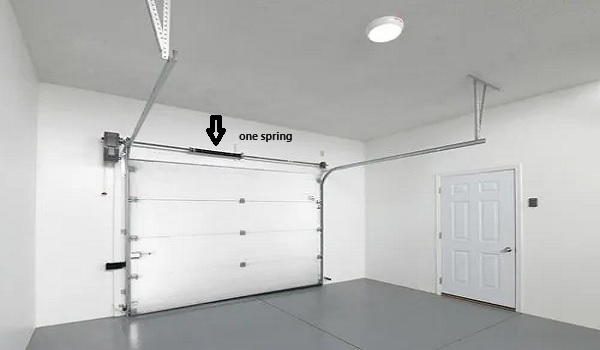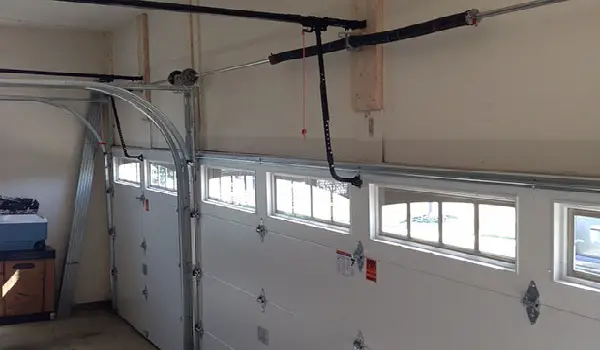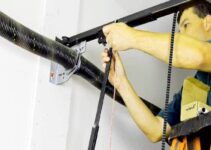Your garage door is an essential part of your daily life, offering security and convenience. As someone who has spent years working with garage doors, I understand that many homeowners may not fully grasp the intricate mechanics that keep their garage doors running smoothly.
One vital component of this complex system is the garage door spring. If you’ve ever asked yourself, “Can a garage door work with one spring?” or “How many springs does a garage door need?” – you’re about to gain insights from my extensive experience.
In this in-depth guide, I’ll share my expertise on garage door springs, including their significance, safety implications, lifespan considerations, various types, and how to select the most suitable springs for your garage door.
How Many Springs Does a Garage Door Need?
Garage door springs play an indispensable role in the operation of your garage door. They are the unsung heroes that counterbalance the weight of the door, making it effortless to open and close.
While most garage doors are equipped with either one or two springs, the exact number depends on factors such as the door’s weight and size.
1. Single Spring System

Smaller, lighter garage doors often rely on a single torsion spring. This spring is installed above the door and runs parallel to the door’s path of movement.
While a single spring can effectively support a lighter door, it’s vital to be aware of the potential drawbacks, as I’ll explain shortly.
2. Dual Spring System

Heavier garage doors, such as those constructed from solid wood or large steel panels, typically employ two torsion springs.
These springs work in unison to provide enhanced balance and even distribution of the door’s weight. Opting for two springs not only boosts the door’s performance but also elevates safety levels significantly.
Can a Garage Door Work With One Spring?
Now, let’s tackle the pressing question: “Can a garage door work with one spring?” The concise answer is yes, but there are crucial considerations and potential pitfalls to be aware of.
Risks Associated with a Single Spring System
- Safety Concerns: A single spring can be less dependable than a dual spring setup. In the unfortunate event of a spring breaking, the door could descend suddenly, posing a severe safety hazard to anyone in its vicinity.
- Strain on the Spring: A single spring is subjected to the full weight of the garage door. Over time, this constant stress can accelerate wear and tear, leading to more frequent repairs and replacements.
- Imbalanced Operation: Garage doors relying on a single spring may become unbalanced, causing one side to rise faster than the other. This imbalance can result in uneven wear and damage to the door and its components.
How to Replace a Broken Garage Door Spring
Whether you’re faced with a broken garage door spring or contemplating an upgrade from a single to a dual spring system for reasons of safety and performance, knowing how to proceed with the replacement process is vital.
Here’s a step-by-step guide based on my years of hands-on experience:
- Prioritize Safety: Safety should always come first. Disconnect power to your garage door opener, secure the door partially open, and ensure you have the necessary tools and protective gear.
- Identify the Type: Determine whether your garage door employs extension springs or torsion springs. This determination will influence the replacement method and the tools required.
- Release Tension Safely: Carefully release the tension on the old spring(s) following the appropriate procedures and employing the right tools. This step can be extremely hazardous and is best left to professionals if you’re uncertain.
- Remove and Replace: Once the tension is released, remove the old spring(s) and replace them with the new ones, meticulously following the manufacturer’s guidelines.
- Rebalance the Door: After installing the new springs, ensure your garage door is correctly balanced. If necessary, adjust the spring tension to achieve optimal balance.
- Thorough Testing: Put the garage door through multiple cycles of opening and closing to confirm that it functions flawlessly.
- Regular Maintenance: To extend the lifespan of your new springs, implement routine maintenance by lubricating them and routinely inspecting for signs of wear and tear.
Conclusion
While it is feasible for a garage door to function with a single spring, it’s not the recommended approach due to associated risks and limitations.
Safety should always be the paramount concern when dealing with garage door springs. If you currently have a single spring system and harbor concerns about safety and performance, I strongly advise considering an upgrade to a dual spring setup.
Regular maintenance and prompt replacement of broken garage door springs are essential to ensure your garage door continues to operate smoothly and safely.
Keep in mind that a well-maintained and correctly balanced garage door enhances the security and convenience of your home.
So, if you’ve been pondering the question, “Can a garage door work with one spring?” remember that while it’s possible, it’s not advisable.
Prioritize safety and consider the many benefits of a dual spring system for the long-term performance and safety of your garage door.
For more detailed insights into garage door spring replacement, garage door spring repair, garage door spring safety, garage door spring lifespan, garage door spring types, how to select the right garage door springs, and how to maintain them effectively, I recommend consulting with a professional garage door technician.
They possess the expertise to provide tailored guidance based on your specific requirements, ensuring that your garage door operates seamlessly and safely.
Don’t compromise on the safety and functionality of your garage door make informed decisions and invest in the appropriate springs to enjoy peace of mind and unparalleled convenience.


